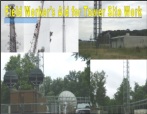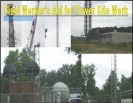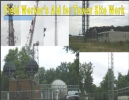Podcast: Play in new window | Download | Embed
Subscribe: Apple Podcasts | RSS
I am going to go over the HetNet, what it is, and how it will mean more work for the entire industry. I have more information in the podcast but I do ramble a bit. I also put come rigging and cling videos at the end of the blog. The first video is really good at explaining how slings are made and the difference between them Please take the time to look at them. No, I am not promoting anyone, I just thought it was a good overview of slings and Jim Steele did a great job. My opinion!
OK, so what is a HetNet? Well, Wikipedia definition is here. Let me break it down for you and explain.HetNet is short for Heterogeneous Network which when you break it down in the wireless world it would be a combination of connecting Macro and Micro cells and several technologies into one network to create a better overall network. That would include LTE, CDMA, and Wi-Fi. Just think that several different devices all working together combining different technologies into one beautiful seamless network! Look up HetNet and you see it’s a combination of Macro, pico, and femto cells. Multiple systems, multiple frequencies, and multiple technologies all working in one harmonious system so you can play Angry Birds on your smart phone. LTE, CDMA, and Wi-Fi, all working to make sure that you can use your phone to look up directions to the nearest bar.
iTunes search for wade4wireless today!
Don’t hesitate, subscribe and write a review!
You could always subscribe to the blog!
[emailpickup]
What does this mean to the wireless deployment industry? Billions of dollars from carriers and Public Safety. In the USA I am hoping that FirstNet realizes that if they deploy Macro and Micro together they will be starting with a better network giving better coverage. Why not build the best network possible from day one? If you have time read this article from Mission Critical. It shows you that the small cell deployment will really start to get rolling. They expected more in 2014, but there are too many deployment issues to be worked out. I think that most of the research people totally overlook deployment and backhaul. They need to understand that Site Acquisition and backhaul will be similar to that of a cell site. It is not going to be quick and easy. It needs to be well thought out and designed and cost-effective. All three are hard to align.
So what does this mean to the tower worker, the tower technician, the field engineer? Well, it will mean more work. The small cell deployment will create a good bit of work for the deployment people. It will be large deployments for work that probably won’t be more that 15′ off of the ground. It will also be changes to the antennas and equipment on the towers. This is going to shape the industry as we know it.The tower work will not only include improvements to antennas, but the outdoor units, the RRH or RRU, will be improved, changes, fiber will be run on the tower, like it is now, and will the primary cable used. The Hybriflex cable and how it will be common place. Then, to make the network complete, the small cells will complement the network. The wireless worker who has the fiber skills and understands antennas will be the one who has the experience to terminate fiber, understand azimuth, and power up the unit to make sure it is installed correctly and working properly. Make sure you have the proper training and you will bid on the work and hopefully win the large deployments locally. There will be a lot of work so if you win in your hometown, great. I don’t see people traveling far to do this work so this is a great opportunity for you to get some local work. It should only take 2 people to do this work.
Just because it is smaller and lighter doesn’t mean you should not think about safety! You need to know about ladder safety while you are there. Also, remember that you will be on the street and in businesses and malls. What I mean is you will be around people who will complain if you talk like you talk at the tower. This means limit the swear words, specifically the F word because if there are complaints that get back to the carriers then they will remove you from the bid list for something stupid. Trust ,me, I know. I had complaints about one of my crews that took hours of apologies to many people who I had to personally deal with because the crew forgot that “normal” people were around. Be safe and be courteous. Think about the people around you when you are working. For more on ladder safety go to OSHA Ladder Safety Quick Card.
Anyone who thinks we don’t have dead spots must live in an awesome area because I still drop calls on the highways and in the cities and in my house. Maybe it’s just me, right? So when you look at the HetNets being deployed, currently by AT&T Wireless and Verizon Wireless you will see that the changes and upgrades to the networks are massive. They are not only going to repair dead-zones but improve the download capabilities of the devices. Someday they may compete with the cable companies for internet access.
So who will deploy a HetNet? Everyone! It is a combination of Macro work by the tower climbers and the Small Cell deployment people rolling out the large numbers. Small cell deployment will be broken down into 2 segments including indoor and outdoor. Indoor should be very straight forward where you deploy several in a building or a mall but it still takes RF design and site engineering and backhaul. However, then you will have a stadium where you will have a mix of indoor and outdoor. This is where the engineering will really be precise. Not only the RF engineering, but you will have site design and backhaul that will be taken into consideration.
Small Cells will really improve coverage to the customers who will appreciate having not only a good connection but also great download speeds. Ubiquitous coverage will be closer than ever, at least in populated areas. It will really start to become a solid reality that we have wireless coverage no matter where you are at in populated areas. HetNet will become the norm in the industry. I don’t think the OEMs and carriers look at it with any curiosity now; they are looking to roll it out.
What do you think about this or what I should do next?
I kept this short; more in the podcast, here are some links.
http://www.pcia.com/industry-initiatives/hetnet-forum
http://cms.comsoc.org/SiteGen/Uploads/Public/Docs_Chapter_Portugal/Events/Slides_Talk_12_4.pdf
http://www.thedasforum.org/wp-content/uploads/2014/08/Mission-Critical-Spectrum-low-res-8-14.pdf
http://www.ericsson.com/res/thecompany/docs/press/media_kits/hetnet_infographic_vertical_04.pdf
http://nsn.com/portfolio/solutions/heterogeneous-networks
http://www.alcatel-lucent.com/solutions/small-cells
OK, more rigging training videos!
Crane work mostly but you may find it useful.
The first one is on Slings and how they are made, very interesting and useful!
I will put out a series of wireless worker paperwork that I will have coming out soon and some books to help you out with the future paperwork issues.
Show that you love the climber’s families by helping the Hubble Foundation!
2 books. One for the new tower climber, the green hand, to understand that will be expected. The other is a handy aid to help out when you are at the site. I am writing a new book to go over all of the paperwork that you could encounter on the job so you understand what you are working on and what you should be doing. You may expand to other jobs in the industry. This can be the beginning of a great career path in the wireless industry.
Kindle:
My PDF books so you can buy with PayPal:
My PDF books so you can pay with Credit Card:










